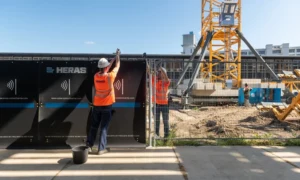Chronic pain can be debilitating, affecting every aspect of a person’s life. For those who have tried various treatments with limited success, spinal cord stimulation (SCS) offers a revolutionary solution. This advanced therapy has transformed the lives of many patients by significantly reducing pain and improving quality of life. Here’s a comprehensive look at spinal cord stimulation and its benefits.
What is Spinal Cord Stimulation?
Spinal cord stimulation involves the use of a small device, known as a spinal cord stimulator, which is implanted under the skin. This device sends mild electrical pulses to the spinal cord, interrupting pain signals before they reach the brain. The result is a significant reduction in the perception of pain.
How Does Spinal Cord Stimulation Work?
- Implantation Procedure: The implantation of a spinal cord stimulator is typically a two-step process:
- Trial Phase: A temporary device is implanted to test the patient’s response to SCS. If the trial is successful, a permanent device is then implanted.
- Permanent Implantation: The permanent device, including a pulse generator and electrodes, is surgically placed under the skin.
- Electrical Pulse Delivery: The device delivers electrical pulses to the spinal cord through electrodes placed near the spinal nerves. These pulses interfere with pain signals, reducing the sensation of pain.
- Patient-Controlled: Patients can adjust the intensity and frequency of the electrical pulses using an external remote control, allowing for personalized pain management.
Conditions Treated by Spinal Cord Stimulation
SCS is effective for a variety of chronic pain conditions, including:
- Failed Back Surgery Syndrome (FBSS): Persistent pain after spinal surgery can be effectively managed with SCS.
- Complex Regional Pain Syndrome (CRPS): SCS can help alleviate the severe pain and inflammation associated with CRPS.
- Peripheral Neuropathy: This condition, which affects the peripheral nerves, can be managed with SCS, reducing the tingling and burning sensations.
- Chronic Leg and Arm Pain: Conditions like sciatica or radiculopathy, where pain radiates into the legs or arms, respond well to SCS.
- Arachnoiditis: Inflammation of the arachnoid lining of the spinal cord can be managed with SCS, reducing severe pain.
Benefits of Spinal Cord Stimulation
- Significant Pain Reduction: Many patients experience a substantial decrease in pain, allowing for improved daily functioning and quality of life.
- Reduced Dependence on Pain Medications: SCS can lessen the need for opioid pain medications, minimizing the risk of dependency and side effects.
- Minimally Invasive Procedure: The implantation of a spinal cord stimulator is less invasive compared to other surgical options, with a shorter recovery time.
- Adjustable and Reversible: The therapy is adjustable to meet individual pain needs and can be reversed if the patient decides it’s not suitable.
- Improved Mobility and Activity Levels: With better pain control, patients often find they can engage in activities they previously avoided.
Potential Risks and Considerations
- Surgical Risks: As with any surgical procedure, there are risks such as infection or bleeding.
- Device Malfunction: Though rare, the device may malfunction or move, requiring additional surgery.
- Not Suitable for Everyone: SCS may not be effective for all types of pain or for all patients. A thorough evaluation is necessary to determine suitability.
The Process of Getting a Spinal Cord Stimulator
- Consultation and Evaluation: A pain management specialist will assess your medical history, pain condition, and previous treatments to determine if SCS is suitable.
- Trial Period: A temporary stimulator is implanted to evaluate its effectiveness in reducing pain.
- Permanent Implantation: If the trial is successful, a permanent device is implanted, followed by adjustments and programming to optimize pain relief.
- Follow-Up and Maintenance: Regular follow-ups ensure the device is functioning correctly and adjustments are made as needed.
Conclusion
Spinal cord stimulation is a groundbreaking treatment for chronic pain, offering hope to those who have exhausted other options. By interfering with pain signals before they reach the brain, SCS can significantly reduce pain and improve the quality of life for many patients. If you are struggling with chronic pain and seeking a long-term solution, consult a pain management specialist to explore the potential benefits of spinal cord stimulation. This innovative therapy could be the key to regaining control over your life and achieving lasting pain relief.









































